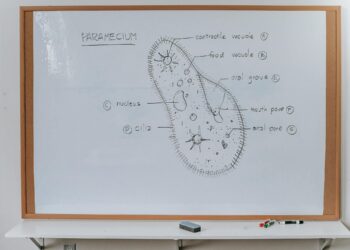Summertime is the perfect time to engage in watersports because of the increased weather temperature. But before you go diving in foreign water bodies, there’s something you need to know. There’s a microscopic organism lurking in freshwater lakes and rivers.
This organism is hidden from sight but still, it is capable of causing havoc as big as death if it finds its way into the human body.
This elusive predator is known as the “brain-eating amoeba.” This organism had grabbed attention for its rare yet deadly encounters with unsuspecting individuals. As we learn more about this creepy amoeba, we’ll uncover a story about how it survives and the overall effect it has on people.

What is Naegleria fowleri?
Naegleria fowleri is a tiny single-celled creature nicknamed the “brain-eating amoeba.” It’s called that because in rare cases, when it gets into a person’s body, it can cause a serious infection in the brain. This amoeba likes to live in warm freshwater such as lakes, rivers, and hot springs. These habitats provide the ideal conditions for its survival and multiple reproduction. However, you won’t find it in salty water like the ocean, though, because this organism can’t survive there.
How Does It Infect Humans?
Naegleria fowleri can infect people when they engage in activities such as swimming, diving, or water sports, in a contaminated freshwater body. Once inside, the amoeba travels along the olfactory nerve, which is responsible for our sense of smell, and makes its way to the brain.
In the brain, Naegleria fowleri causes a rare but really serious infection called primary amebic meningoencephalitis (PAM). It starts by eating away at brain tissue, which causes swelling and inflammation. This can get worse quickly and lead to bigger problems with how the brain works. If it’s not treated fast, it can even be fatal in most cases.
What Are The Symptoms of Naegleria Fowleri
The symptoms associated with naegleria fowleri infection can show up fast, usually within a week of being in contaminated water. You might get bad headaches, high fever, feel nauseous, throw up, have a stiff neck, and sometimes even have seizures.
However an infection like this one is sometimes hard to diagnose not only because it’s super rare. But also because its symptoms can seem like other common sicknesses, like bacterial meningitis. So, it can take time to figure out if the problem is actually Naegleria fowleri and not another sickness causing the problem.
Treatment and Prevention
Study says that, “due to the rarity of N. fowleri infections in humans, there are no clinical trials to date that assess the efficacy of one treatment regimen over another.” This simply means that there’s currently no cure for Naegleria fowleri infection once it gets into your brain.
Some medicines might help by killing the amoeba or reducing swelling, but chances of surviving are really low even with treatment. However, the only thing you can do as a person who has been infected from the brain-eating amoeba is to keep yourself informed and protected. We have outlined a couple of simple preventive steps that you can follow to keep you from getting infected. There are as follows:
- Stay away from warm freshwater, especially in the hot summers when the amoeba likes to hang out.
- Consider using nose clips or holding your nose tight when swimming in places where the amoeba might be.
- Be careful when diving; avoid shallow freshwater spots where the amoeba lives.
- Make sure pools and hot tubs are well looked after to stop the amoeba from growing.
Conclusion
To sum up, Naegleria fowleri is really dangerous because it can cause serious brain infections, even though it’s rare. The best thing to do is prevent it since there’s no cure once you get infected. That means avoiding warm freshwater in the summer, using nose clips when swimming, and keeping pools clean.

















